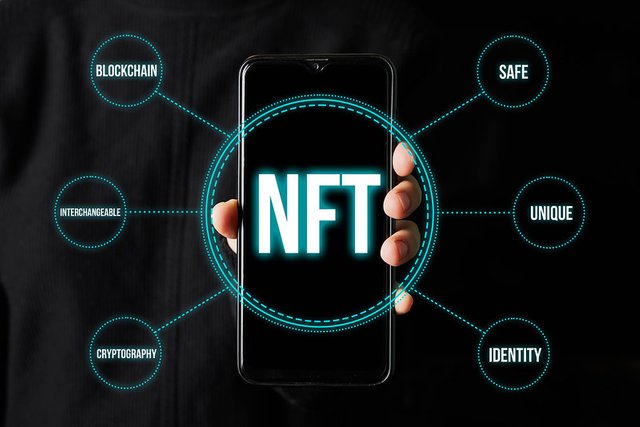What is NFT? - The Basics of Non-Fungible Tokens

Non-fungible tokens, also known as NFTs, are digital tokens that represent assets that are unique — and not interchangeable. Within the broader crypto ecosystem, NFTs are most commonly found in the world of gaming. They are also relevant to other sectors, including financial services, real estate, and more.
With so much attention being paid to the potential of blockchain and its decentralized applications, some people have overlooked the potential of its native applications. NFTs can be used for more than just gaming. Here’s what you need to know about NFTs.
Click here to read more: https://tinyurl.com/3sf7raer
What is a Non-Fungible Token?
A non-fungible token (NFT) is a type of asset that can be used to represent a specific real-world asset, such as collectibles or real estate. Tokens can also represent tokens — like cryptocurrency tokens.
The term non-fungible comes from the fact that these assets are not interchangeable — they have distinct properties. Collectible and real-world assets are usually unique. An object, like a baseball card, is not a collectible if it is one baseball card out of thousands.
How Do You Make an NFT?
To make an NFT, you start with a real-world asset. You might collect baseball cards, for example, or buy real estate for the token to represent. The asset is digitized to create a blockchain record of the asset’s attributes, including its name, and ownership details. Asset owners can control who is able to access the asset data, and sell or transfer the asset tokens with the same ease as the underlying asset.
How Can Non-Fungible Tokens Be Used?
Real-world assets are useful in many ways; they demonstrate ownership, provide provenance, and even serve as collateral. Using an NFT as a tool, however, may be more compelling.
You can use NFTs as a way to invest in real-world assets. You purchase NFTs to own a slice of a real-world asset. You can then redeem the NFTs for a set percentage of the underlying asset, or sell them to another investor.
Investors can use NFTs to create more liquid investment vehicles. You can, for example, invest in a limited number of NFTs that represent a specific real-world asset, such as a limited number of Tesla shares.
Click here to read more: https://tinyurl.com/3sf7raer
How to Trade Non-Fungible Tokens
There are a range of use cases for NFTs. However, it’s important to remember that such assets are not fungible. Thus, many of their uses depend on how their issuers choose to use them.
You can, for example, use an NFT to represent a limited-edition collectible card, which can be used as a form of digital collectible. These can be traded just like other cryptocurrency tokens.
Key Consensus When Trading NFTs
Anyone can create an NFT, but to issue them as a tradable asset, they must follow a set of steps. For a token to be compliant with applicable securities laws and regulations, the issuing entity must follow best practices in issuing and trading NFTs.
Securities laws and regulations vary by country. As a result, the specific steps an entity must follow to issue compliant NFTs will vary by jurisdiction. The key consensus that trading NFTs must adhere to is that the underlying asset token is an investment. The SEC has indicated that an investment is generally only considered an investment if it has a reasonable likelihood of return.
The Downsides of Trading NFTs
The asset market for real-world assets is new and nascent. Market participants are just beginning to figure out what works, and what doesn’t. As with any nascent market, there are risks and pitfalls to be considered. While many of these risks apply to any asset market, they are amplified in the NFT market.
Risk of fraud: The vast majority of cryptocurrency scams are based on the exploitation of investors who are searching for quick returns. It is critical that you do your due diligence and only invest in cryptocurrency offerings that are legitimate and compliant with applicable securities laws and regulations.
Risk of hacking: The market for trading cryptocurrencies is highly speculative, and there is also significant volatility. This means that any investor could lose a significant portion of their investment in a single day. It’s critical to secure your digital assets, including your digital currency wallets, with a robust security protocol.
Risk of scams: The nascent nature of the asset market makes it difficult for investors to discern legitimate offerings from scams. It’s critical to do your research and only invest in legitimate, compliant offerings Risk of illiquidity: Most cryptocurrencies are not yet widely accepted as a payment medium.
This results in a dearth of liquidity, which means that illiquid assets, like real-world assets, are not currently traded on an exchange.
Conclusion
NFTs can provide a new way to invest in real-world assets. They allow investors to purchase a share in a real-world asset, rather than purchasing a specific product or service. This flexibility can make it easier to diversify your investment portfolio and make your money work harder for you.
However, there are some important considerations to keep in mind when investing in an NFT market. Please note that this is not a financial or investment advice. Therefore, you are solely responsible for the decisions you make when investing in any asset.